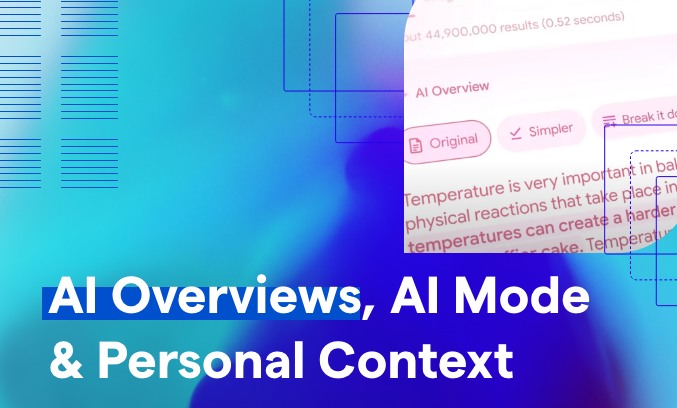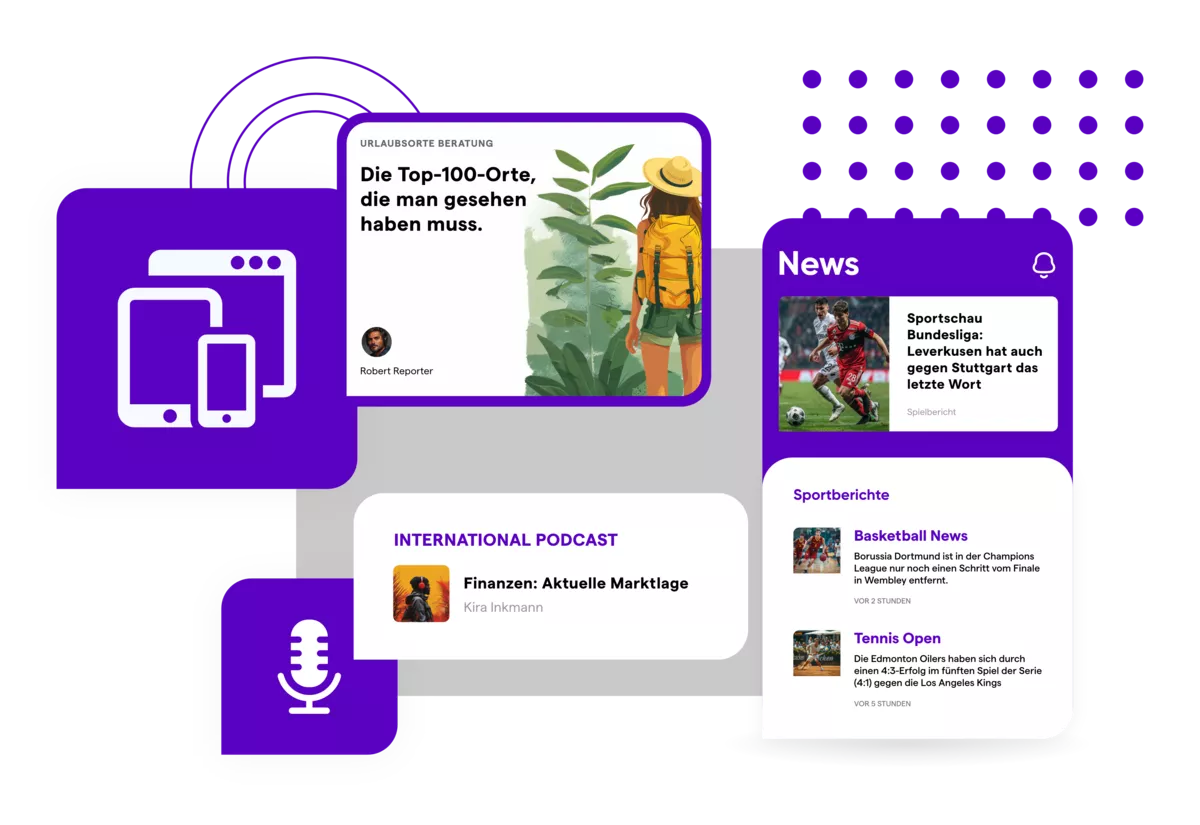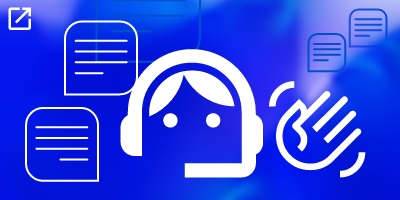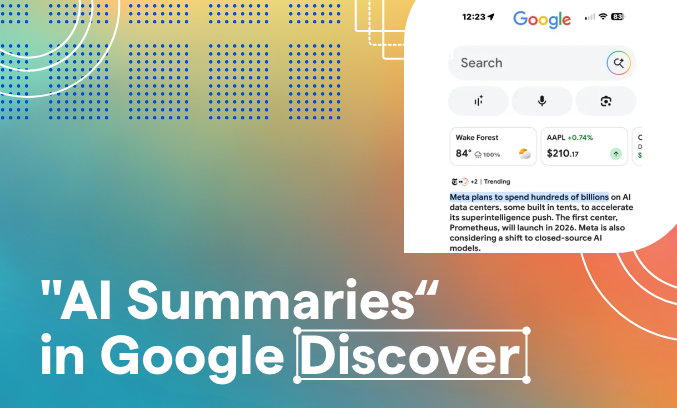- AI Solutions
- Industries
- AI Projects
- Knowledge
- About us
Blog
Reach with Google Discover: What Options Do Media Companies And Publishers Have?

Johannes Sommer
CEO, Retresco
With the launch of AI Overviews and AI Mode, Google is fundamentally reshaping search around artificial intelligence. This strategic shift is also affecting Google Discover, with AI-generated summaries – known as AI Summaries – currently being tested in the US. For users, the introduction of AI Summaries means fewer clicks, quicker answers – and a longer stay within the Google ecosystem.
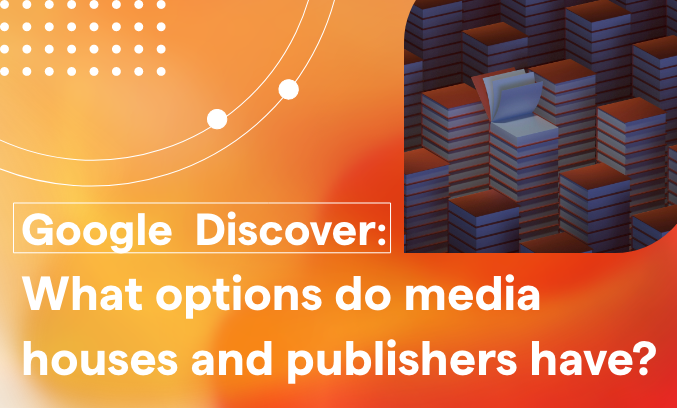
While the incentive for users to visit primary sources directly is decreasing, AI Summaries will likely mean less organic reach, reduced visibility, and a direct threat to ad-funded online offerings for media companies and publishers. Established strategies for SEO and audience growth are coming under pressure.

AI Summaries in Google Discover are currently being tested in the US (Image source: TechCrunch)
Google Discover as a Driver of Reach
Discover was launched in 2018 as a personalised feed and has since become an integral part of mobile usage. The feed appears in the Google app, in the Chrome browser, and can be accessed on many Android devices with a simple swipe. Unlike traditional Google Search, content in Discover is not triggered by an active search query but is based on individual interest profiles. Users “discover” content – they don’t have to search for it.
For media companies, this opened up a new way to build reach: content no longer had to be solely optimised for search engines, but above all needed to be relevant to users’ interests. Google Discover quickly became an important complement to conventional SEO strategies. The curated mix of news, articles and service information generated high reach and helped editorial teams connect with users directly and relatively precisely. In particular, content that wasn’t accessed directly via news search could gain additional visibility through Discover.
How important is Google Discover for media companies?
Over the past few years, Google Discover has become the most important source of Google traffic for many media organisations. According to the SEO agency Get Traction, the share of Discover in total Google traffic rose from 61% in 2021 to 70% in 2025, while Google Search declined from 29% to 24% over the same period.
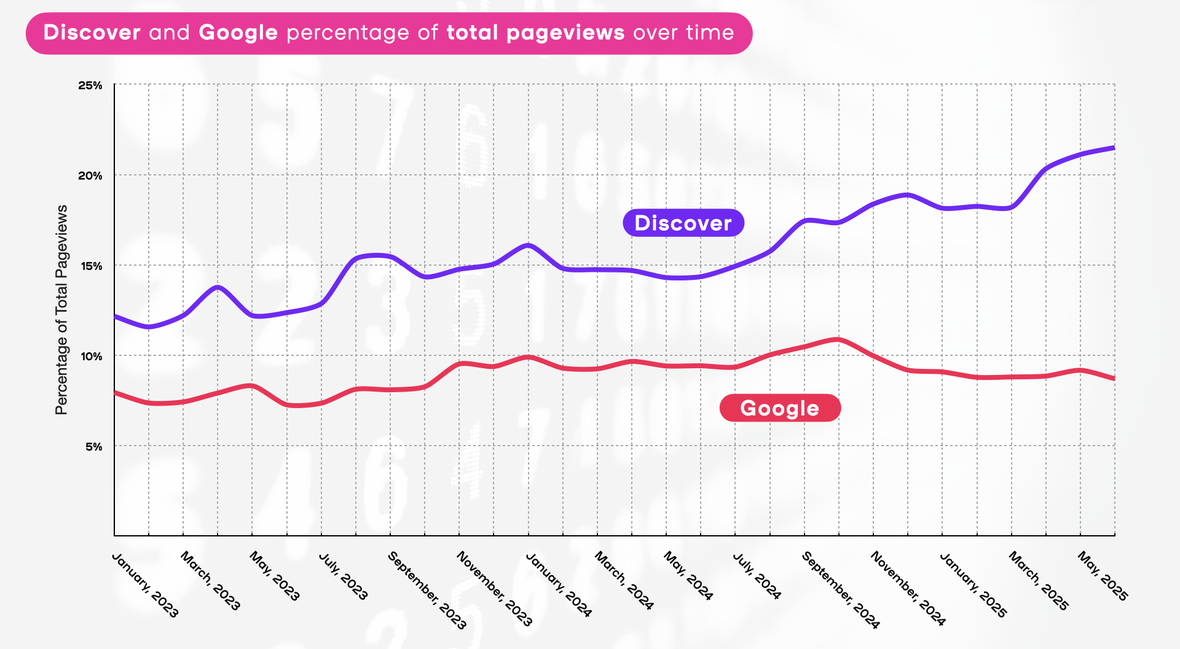
Google Discover generates significantly more traffic than Google Search (Image source: Smartocto)
Winning new subscribers with Google Discover
While Google Discover has played a central role in increasing reach over the past few years, its contribution to subscription growth remains relatively low. Many users who land on a media site via a Discover article are unfamiliar with the offering behind it. This is especially true for regional newspapers that attract national audiences with local or regional topics. Exceptions include content with high service or utility value that is placed behind a paywall.
Google Discover in Flux
With the launch of AI Summaries and AI Overviews, Google’s quality standards – E-E-A-T (Experience, Expertise, Authoritativeness, Trustworthiness) – are coming into sharper focus. Anyone wishing to appear in Discover as a credible source must send clear signals: proven expertise, original content, and trustworthy sources.
The AI Summaries currently being tested consist of condensed headlines that bundle content from multiple media outlets. The news icons of the included publishers are visible – though effectively only when clicking on the small, overlapping symbols. A note at the bottom indicates that the summaries are AI-generated and may contain errors.
At the same time, Google is already experimenting in the US with new formats such as carousels under the heading “More updates for you”. However, these do not lead to the publishers’ content, but instead link to AI Overviews within Google Search.
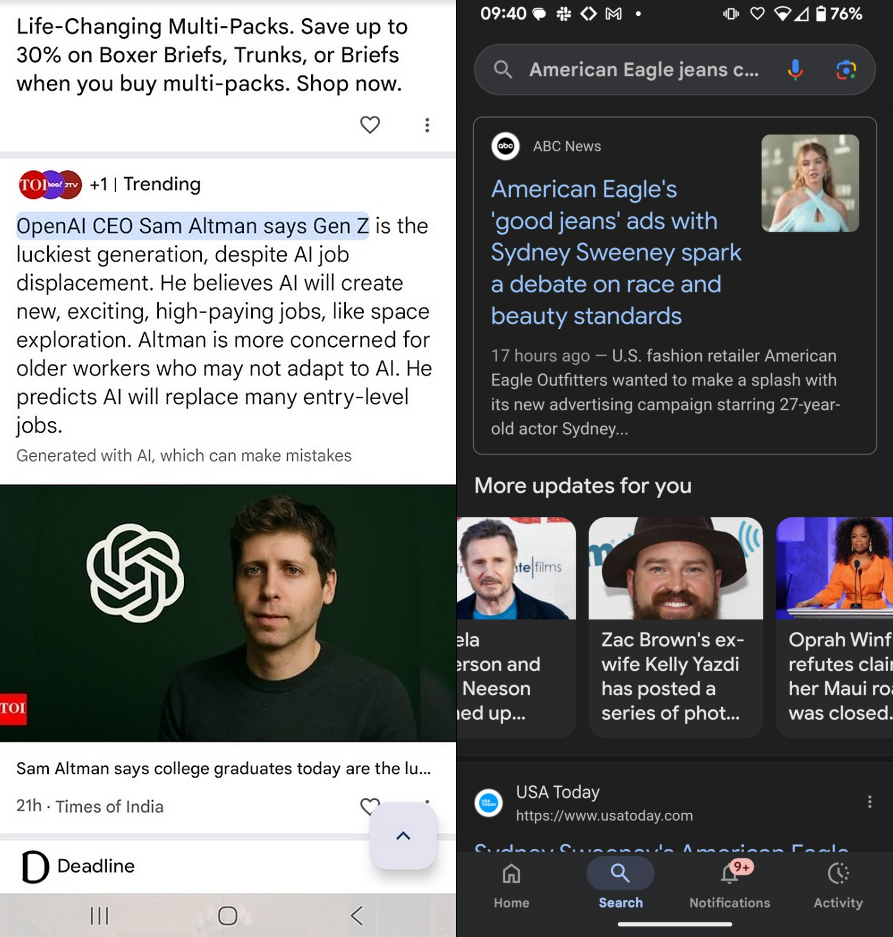
Discover: AI can make mistakes – more information available from Google (Image source: Cindy Krum)
Alongside AI Summaries, Google is testing additional AI features in Discover, such as Preferred Sources. In the Top Stories section, users can now select their preferred news outlets. Content from these publishers is then displayed more prominently. Since August, it has been possible in the US to mark media outlets as Preferred Sources and have their content highlighted in the news feed. Those who manage to be selected as a preferred source can achieve noticeably greater reach in the Top Stories. US publishers are already actively promoting this feature to their audiences.
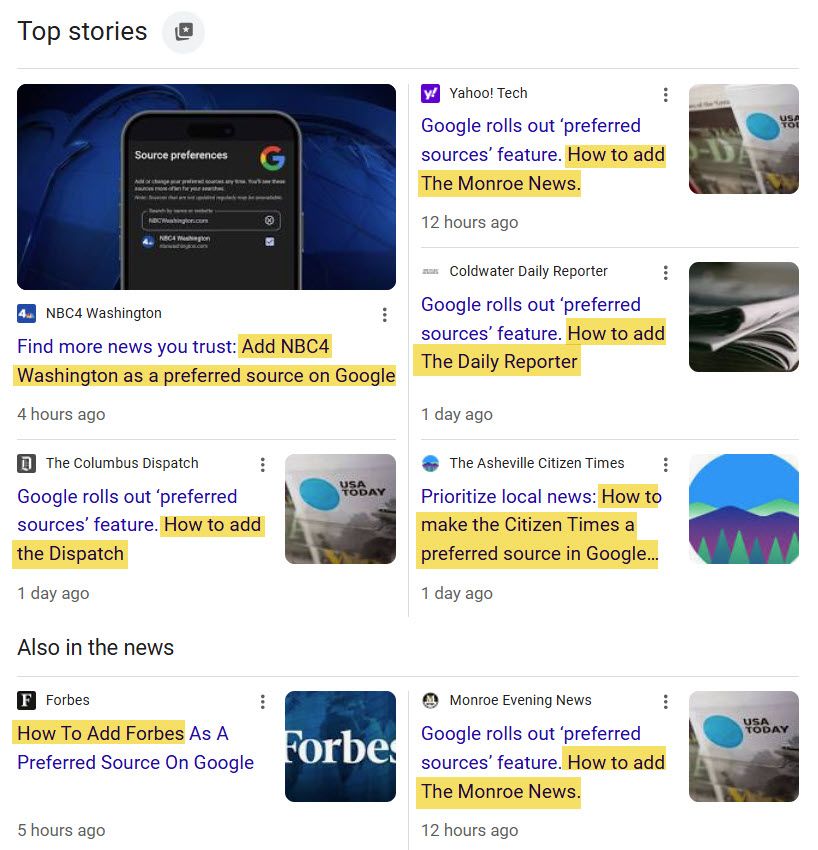
Discover with Top Stories: Users can set preferred media outlets as Preferred Sources (Image source: Jim Robinson)
Which content will Google Discover highlight in the future?
Even though Google Discover is currently undergoing major changes, many proven strategies for increasing reach remain effective:
Entities instead of keywords
Discover works differently from traditional Google Search: clearly identifiable people, places and topics (entities) are what matter. Content should be developed around such recognisable subjects – not around keyword variations.
Topical authority & consistency
Those who publish regularly on the same topics or entities build “topical authority”. That’s why optimised interest profiles are key to anchoring content thematically and maintaining consistency. Recognisable focus areas and a consistent authorship signal both expertise and trust.Creative headlines
Headlines need to stand out in the feed – for example, through questions, lists, or deliberately open formulations that spark curiosity.
Regional focus
Regional and local information with clear geographic references is recommended. Original phrasing helps boost reach.
Timeliness and relevance
News, service content and evergreen topics with a clear or newly created sense of timeliness regularly achieve above-average reach.
Storytelling & depth
Content that goes beyond mere facts, provides background and tells stories has a better chance of performing well in the Discover feed.
Visual optimisation
Large-format, emotive images are ideal. We particularly recommend motifs featuring faces and a clear visual language.
Technical factors
Mobile optimisation, loading speed, structured markups and flawless metadata remain essential prerequisites for Google Discover.
Conclusion: Google Discover is both an opportunity and a challenge
AI summaries in the Discover feed reinforce the trend that content is increasingly consumed within Google’s own products, while organic traffic from these sources is likely to decline for publishers and media houses in the long term. Nevertheless, publishers should continue to strategically evolve and adapt their reach strategies around Google Discover.
With the upcoming rollout of a desktop version, Google Discover is unlikely to lose relevance anytime soon. Early reports suggest that the desktop feed will appear directly below the search bar on the Google homepage – offering even more prominent user engagement.
At the same time, Discover remains a difficult channel to plan for: reach fluctuates significantly and is only partially controllable. Media organisations that take these mechanisms into account, closely monitor changes, and continuously optimise their content can continue to use Discover successfully as a source of reach.
One thing is clear: media houses will only remain sustainably relevant if they prioritise direct user relationships through their own apps, newsletters, and community offerings. Equally essential is data-driven personalisation and the use of AI for intelligent content distribution of proprietary publishing offerings.
Got questions or feedback? Get in touch – our AI experts will be happy to reach out to you!
Recent Blog Posts
